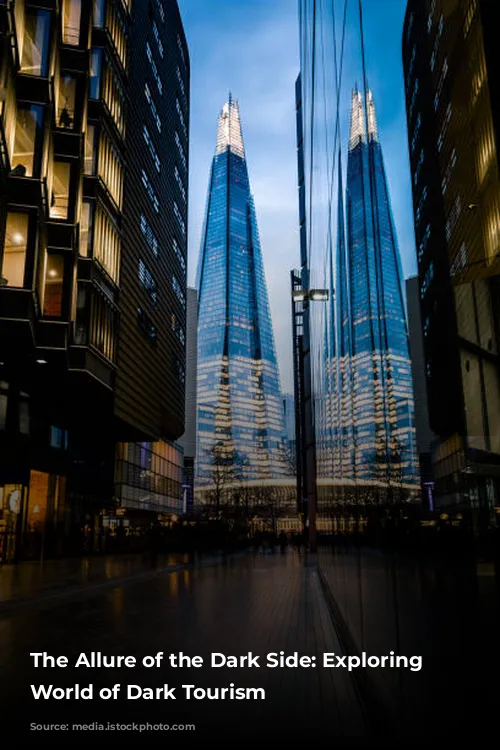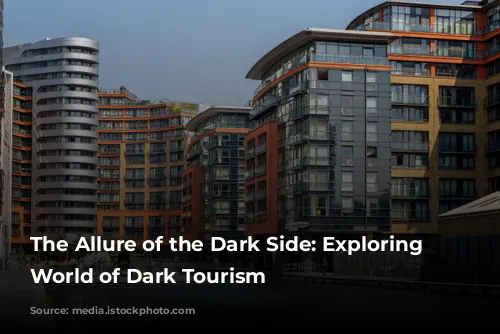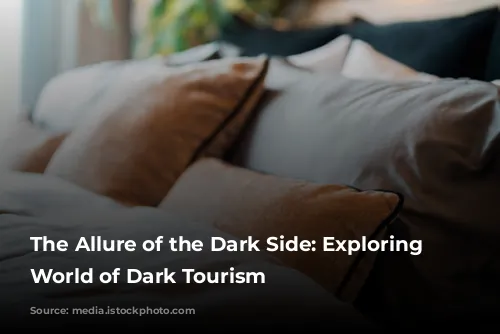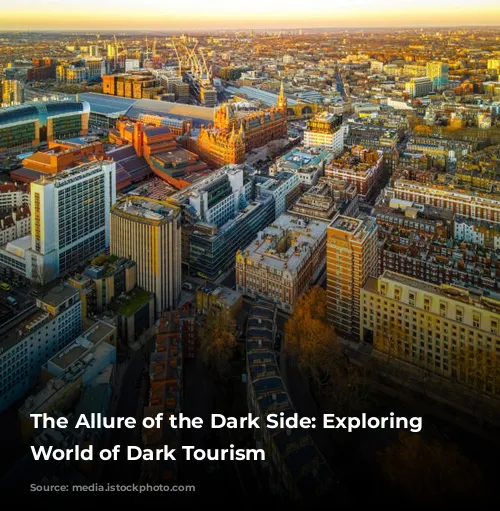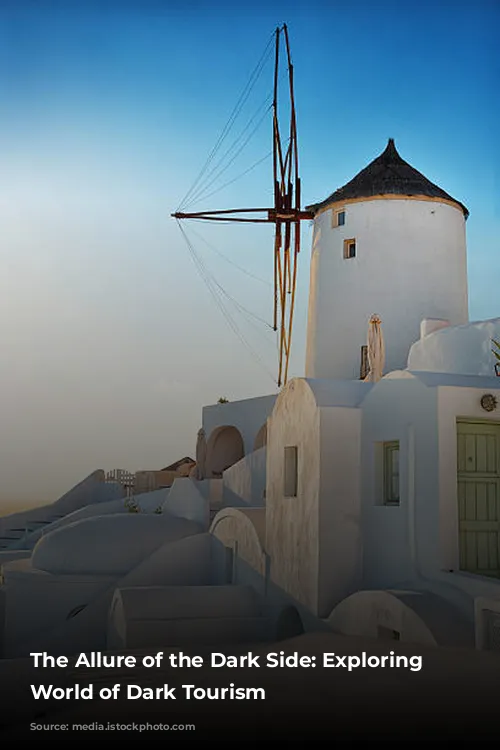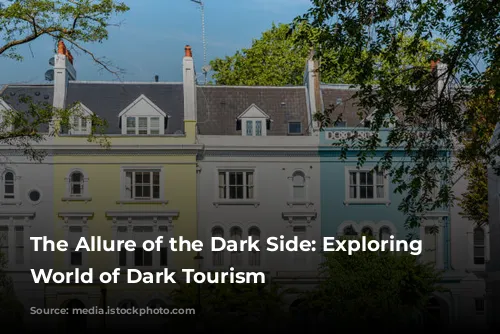Welcome to a journey into the captivating and sometimes unsettling world of dark tourism. This is a world where history’s darkest moments become destinations, and where the morbid and the macabre attract travelers seeking a unique and thought-provoking experience.
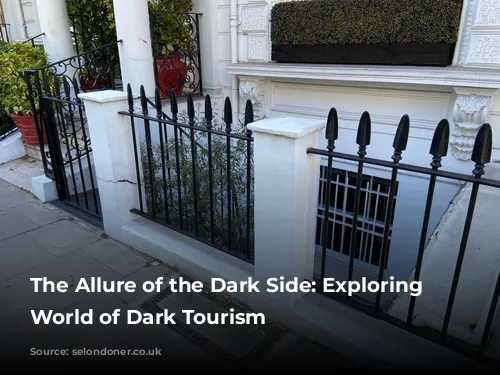
What is Dark Tourism?
The term “dark tourism” might sound ominous, but it simply describes the act of traveling to places associated with death, tragedy, or violence. These sites can range from historic battlefields and concentration camps to the locations of infamous crimes and natural disasters.
While some may view dark tourism as morbid, it’s often motivated by a genuine desire to understand and learn from the past.
It’s a reminder that even in the darkest of times, humanity’s capacity for resilience and hope remains.
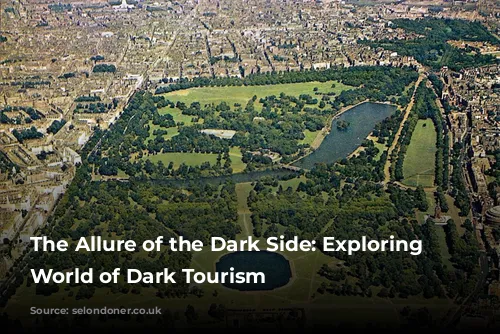
More Than Just a Morbid Curiosity
Dark tourism isn’t just about visiting sites of historical tragedies; it can encompass a wide range of destinations, from the official and well-known to the more obscure and off-the-map.
For example, the Tower of London, with its history of imprisonment and executions, is a popular dark tourist attraction. Yet, a dark tourist might also be drawn to the flat where Jimi Hendrix died, or the site of a less-known crime, such as the Balcombe Street siege.
This spectrum of destinations reflects the diverse reasons why people are drawn to dark tourism, and the various ways they engage with the dark side of history.
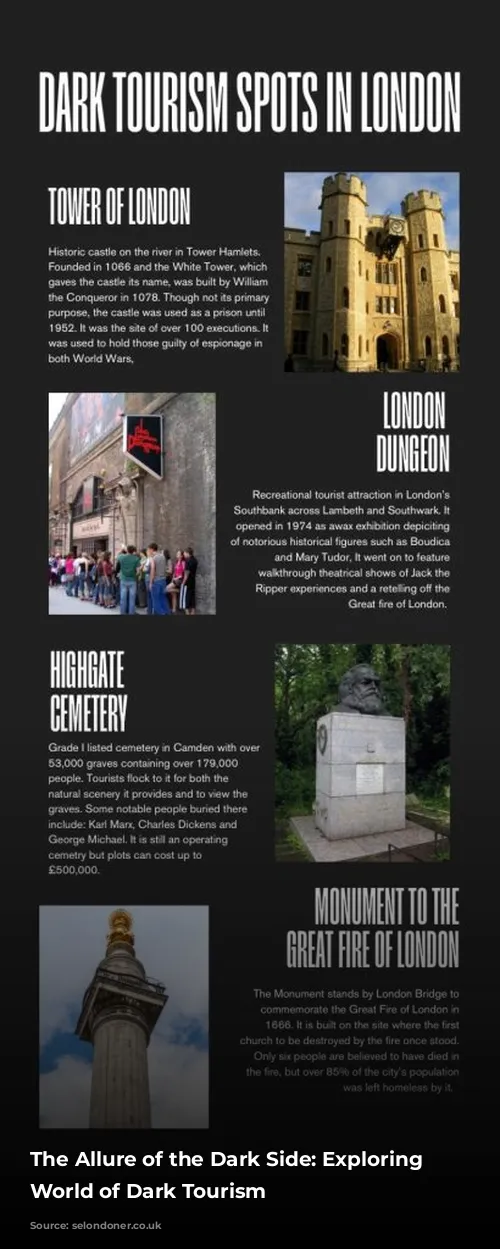
The Psychology of Dark Tourism
What compels people to visit such places?
For some, it’s a deep fascination with history, a desire to connect with events that shaped the world. Others are drawn to the thrill of the unknown, the sense of unease and intrigue that comes with exploring places that are considered taboo or unsettling.
Some individuals find comfort in experiencing the darkness, acknowledging humanity’s capacity for both good and evil.
The appeal of dark tourism extends beyond history, encompassing contemporary events, political upheavals, and even the darker aspects of popular culture.
Think of the reality shows that exploit conflict and suffering for entertainment, or the “prison-themed” bars that blur the line between reality and fantasy.
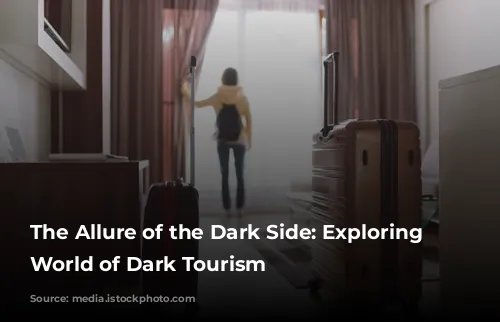
Living in the Shadow of Darkness
The truth is, we are all surrounded by the echoes of darkness. London, a city steeped in history, is a perfect example. The British Empire’s shadow casts a long and complex history of oppression, slavery, and atrocity.
From the streets we walk on to the museums we visit, London’s past is interwoven with events that are both tragic and fascinating.

Dark Tourism: A Controversial Subject
While some may view dark tourism as a morbid curiosity, others argue that it can be a powerful tool for education and understanding.
However, there is a real danger of sensationalizing, glorifying, or even sanitizing these events.
Cases of disrespectful behavior at sites like Auschwitz highlight the importance of ethical considerations and respectful engagement with these sensitive places.
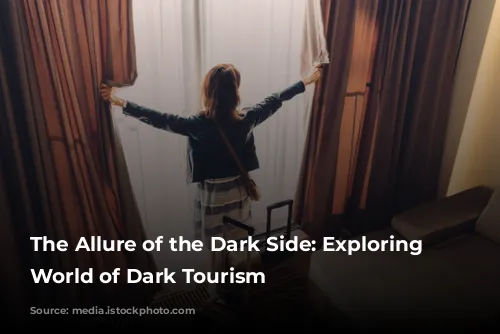
Dark Tourism: A Reflection of Ourselves
The fascination with dark tourism is a reflection of our own complex relationship with the darker aspects of human nature.
It speaks to our inherent desire to understand and confront the realities of life, both beautiful and brutal.
Whether we choose to explore the world’s darkest corners or not, we all engage with dark tourism in some way, be it through our consumption of media, our everyday experiences, or even the seemingly innocent things we buy.
Ultimately, dark tourism is a reminder that the line between light and darkness is often blurred, and that our understanding of the world is shaped by both the beautiful and the terrifying.
